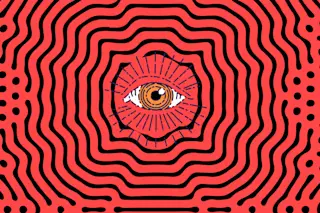For 20 years or so I gave a certain lecture introducing the fundamentals of virtual reality. I'd review the basics of vision and hearing, as well as of touch and taste. At the end, questions began, and the first was often about smell: Will we have smells in virtual reality machines anytime soon?
Maybe, but probably just a few. Odors are fundamentally different from images or sounds. These latter can be broken down into primary components that are relatively straightforward for computers to process. Every sound wave is actually composed of numerous sine waves, each of which can be easily described mathematically. Visible colors are merely words for different wavelengths of light.
In other words, both images and sounds can be described with just a few numbers; interpolating between those numbers describes a wide spectrum of images and sounds. The human retina need only be sensitive to a few wavelengths, or colors, in order for our brains to sense all the intermediate ones. Computer graphics work similarly: A screen of pixels, each capable of reproducing red, green, and blue, can produce nearly all the colors the human eye can see. A music synthesizer can be thought of as generating a lot of sine waves, then layering them to create an array of sounds.
Odors are different, as is the brain's method of sensing them. Deep in the nasal passage, shrouded by a mucous membrane, sits a patch of tissue—the olfactory epithelium—studded with neurons that detect various chemicals. Each of these neurons has cup-shaped proteins, called olfactory receptors. When a particular molecule happens to fall into a matching receptor, a neural signal is triggered that is transmitted to the brain as an odor. A molecule too large to fit into one of the receptors has no odor. In effect, the number of distinct odors is limited only by the number of olfactory receptors capable of interacting with them. Linda Buck of the Fred Hutchinson Cancer Research Center and Richard Axel of Columbia University, both winners of the 2004 Nobel Prize in Physiology or Medicine, have found that the human nose contains about 1,000 different types of olfactory neurons, each type able to detect a particular set of chemicals.
This adds up to a profound difference in the underlying structures of the senses—a difference, it turns out, that raises compelling questions about the way we think, and perhaps even the origins of language. There is no way to interpolate between two smell molecules. True, odors can be mixed together to form millions of scents. But the world's smells can't be broken down into just a few numbers on a gradient. There is no "smell pixel." Think of it this way: Colors and sounds can be measured with rulers, but odors must be looked up in a dictionary.
That's a shame, from the point of view of a virtual reality technologist. There are thousands of fundamental odors, far more than the handful of primary colors. Hypothetically, one could wire up a person's brain to create the illusion of smell. But it would take a lot of wires to address all those entries in the mental smell dictionary. Then again, the brain must have some way of organizing all those odors. Maybe at some level smells do fit into a pattern. Maybe there is a smell pixel.
Somehow the right science buddy always seems to appear to help me consider a topic I've become obsessed with. My friend Melanie, a neurosurgeon, called me one day with an uncharacteristically giddy voice. (Surgeons are rarely giddy.) She said she had urgent news. "I finally found someone else just like you. He even looks like you." This seemed impossible, until I met Jim Bower, a computational neuroscientist at the University of Texas at San Antonio. He's a lot thinner than I am and has straight hair, but there is definitely a resemblance in the face.
Melanie's chance discovery of someone who could pose as my body double was a stroke of luck. For one thing, when I couldn't attend a National Academy of Sciences meeting at which I was due to give a lecture, Jim impersonated me quite successfully (with my blessings, of course). Apparently, that was conservative lecture behavior for Jim; he has been known to give neuroscience lectures, indoors, on horseback.
Even more serendipitous was the fact that Jim happened to be a leading expert on olfaction. He is best known for making biologically accurate computer models of the brain. For some years now he and his laboratory team have been working to understand the brain's "smell dictionary." They suspect that the way the olfactory system is organized has little to do with how an organic chemist might organize molecules (for instance, by the number of carbon atoms on each molecule); instead, it more closely resembles the complex way that chemicals are associated in the real world. For example, they believe a lot of smelly chemicals—those that trigger olfactory neurons—are tied to the many stages of ripening and rotting organic materials. As it turns out, there are three distinct chemical paths of rotting, each of which appears to define a stream of entries in the brain's dictionary of smells.
Jim and his colleagues believe that to "solve" the problem of olfaction—to make the complex world of smells quickly identifiable—the human brain had to evolve a specific type of neural circuitry. That circuitry may have formed the basis for the cerebral cortex—the largest part of our brain and perhaps the most critical in shaping the way we think. For this reason Jim has proposed that, fundamentally, the way we think is olfactory.
Keep in mind that smells are not patterns of energy, like images or sounds. To smell an apple, you breathe hundreds or thousands of apple molecules into your nose. Context is everything: If you are blindfolded and asked to smell a good French cheese, and you know you're standing in a bathroom, your interpretation of the odor will most likely be very different from what it would be if you were in a kitchen. Likewise, if you can see the cheese, you can be fairly confident that what you're smelling is cheese, even if you're in a restroom.
Recently, Jim and his students have been studying the olfactory systems of different types of animals for evidence that the cerebral cortex as a whole grew out of the olfactory system. He often refers to the olfactory parts of the brain as the "Old Factory," as they are remarkably similar across species. Because smell recognition often requires input from other senses, Jim is particularly interested in knowing how that input makes its way into the olfactory system.
In fish and amphibians, the early vertebrates, the olfactory system sits right next to multimodal areas of the cerebral cortex, where the processing of the different senses overlaps. The same is true in reptiles, but in addition the cortex has new regions in which the senses are separated. In mammals, incoming sights, sounds, and sensations undergo many processing steps before ending up in the region of overlap. Think of olfaction as a city center and the other sensory systems as sprawling suburbs, which grew as the brain evolved and eventually became larger than the old downtown.
All of this has led Jim and me to wonder: Is there a relationship between olfaction and language, that famous product of the human cerebral cortex? Maybe the dictionary analogy has a real physical basis. Olfaction, like language, is built up from entries in a catalog, not from infinitely morphable patterns. Moreover, the grammar of language is fundamentally a way of fitting those dictionary words into a larger context. Perhaps the grammar of language is rooted in the grammar of smell. Perhaps the way we use words reflects the deep structure of the way our brain processes chemical information. Jim and I plan to test this hypothesis by studying the mathematical properties that emerge during computer simulations of the neurology of olfaction.
If that research pans out, it might shed light on some other connections we've noticed. As it happens, the olfactory system actually has two parts: One detects general odors, and the other, the pheromonic system, detects very specific, strong odors given off by other animals (usually of the same species), typically related to fear or mating. (The science of olfaction is far from settled, and there's intense controversy about the importance of pheromones in humans.) Language offers an interesting parallel. In addition to the normal language we all use to describe objects and activities, we reserve a special language to express extreme emotion or displeasure and to warn others to pay attention. This language is called swearing.
There are specific neural pathways associated with this type of speech; some Tourette's patients, for instance, are known to swear uncontrollably. And it's hard to overlook the many swear words that are related to orifices or activities that also emit pheromonic olfactory signals. Could there be a deeper connection between these two channels of "obscenity"? Further study is likely to determine whether there's something to this idea or whether we're just talking $*&!.














